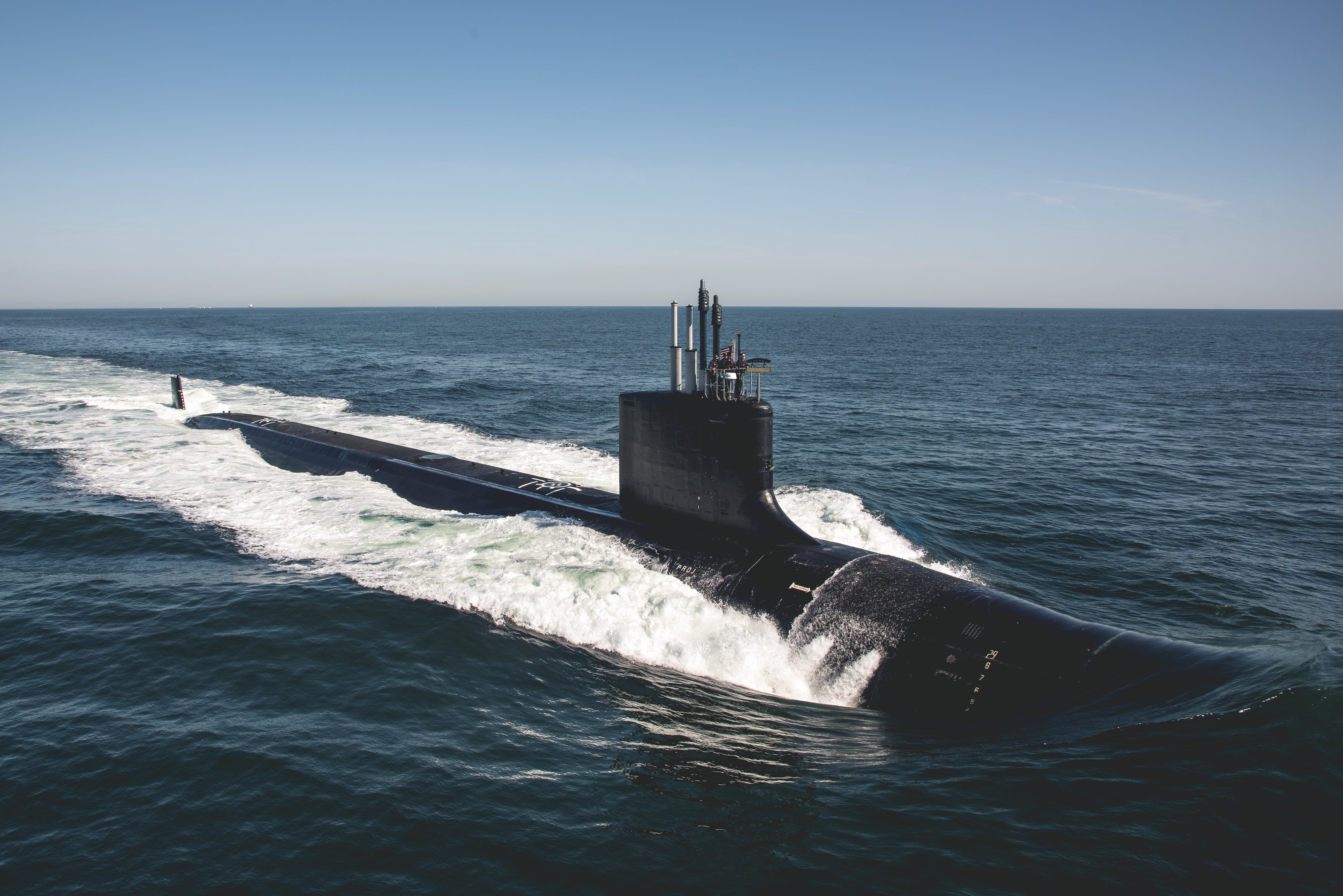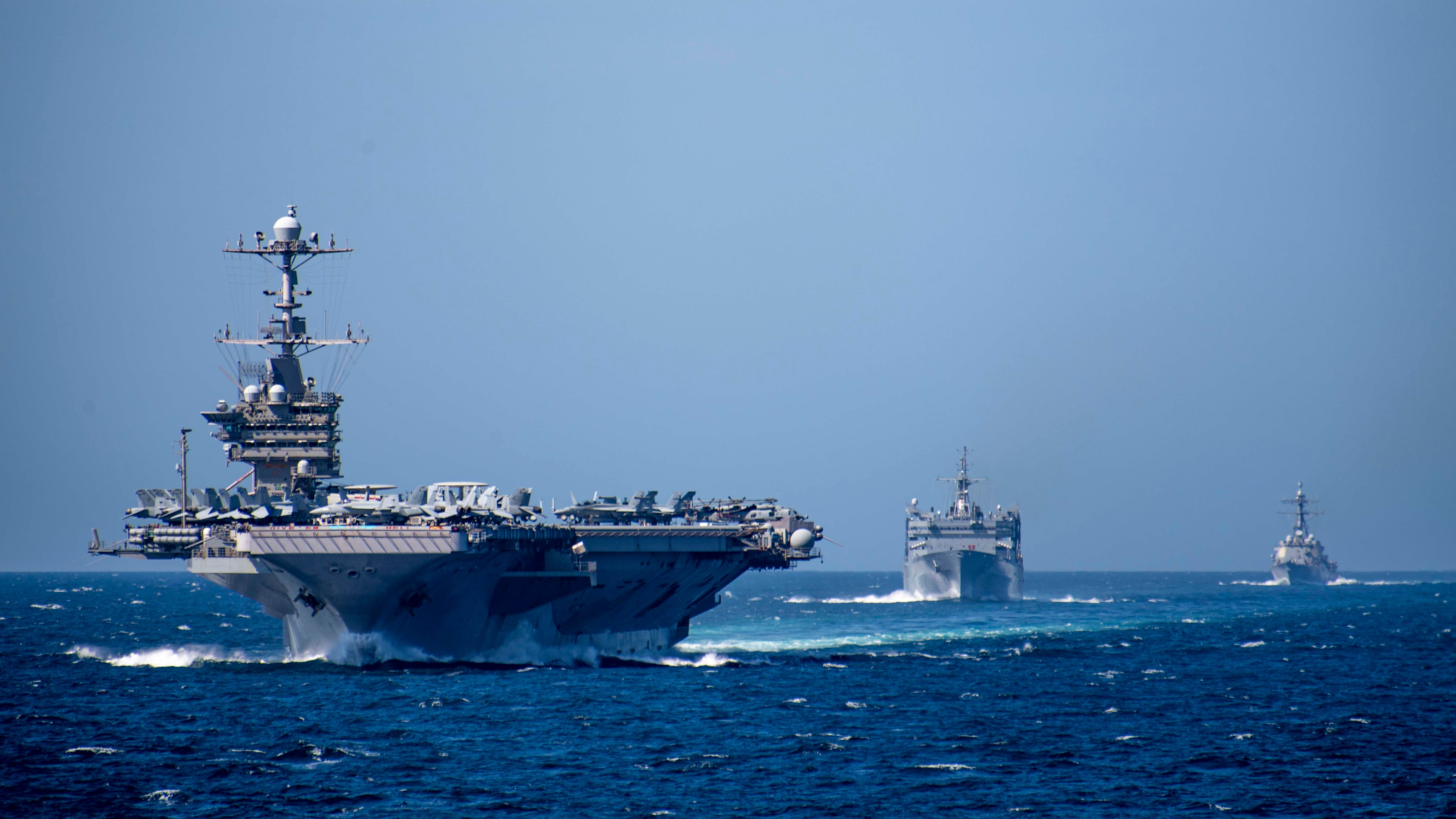WASHINGTON — The U.S. Navy must rapidly grow its attack submarine force, field smaller manned and unmanned combatants and examine changing the role of aircraft carriers in the coming decades as part of a massive expansion of the fleet to maintain American dominance on the seas, Secretary of Defense Mark Esper said Tuesday.
To compete with China’s plans to be a first-rate military power by 2049, the United States must grow its fleet to more than 500 ships by 2045, and more than 355 ships by the mid-2030s, Esper announced, confirming a report last month from Defense News.
To get there, Esper said the Navy must prioritize above all else rapidly building up an attack submarine force of between 70 and 80 ships, up from its current force of 51. The Navy must also rethink how it uses carriers, proposing cutting up to four from the force structure while potentially repurposing the America-class amphibious assault ships as light carriers to hold down presence missions.
RELATED

All told, the fleet laid out by Esper represents a radically different fleet from the current Navy, emphasizing more teaming between manned and unmanned platforms, as well as radically transforming the carrier air wing to focus more on unmanned aircraft of all varieties. In a major shift in department rhetoric, Esper also committed to freeing up funding from across the Defense Department to put into shipbuilding.
“Battle force [20]45 [will] be a more lethal, survivable, adaptable, sustainable, modern and larger force than we have seen in many years,” Esper told an audience at the Center for Strategic and Budgetary Assessments.
“It will also be more balanced, a more balanced naval force that will have a greater number of smaller surface combatants and unmanned or optionally manned ships, along with an ample submarine force, and a modern strategic deterrent,” the secretary continued. "It will also be able to deliver over overwhelming fires balanced across four domains, from the air from the land, from the sea, and from under the sea.”
What’s included?
The fleet outlined by Esper broadly aligns with the studies first reported by Defense News in September: A lighter fleet with fewer carriers and large surface combatants. The attack submarine count with the upper limit of 80, laid out by Esper on Tuesday, is an increase over the early inputs to the study.
In addition to the changes to the carrier fleet and an increase in attack submarine building, Esper outlined a fleet that includes:
- 140-240 unmanned and optionally manned surface and subsurface vehicles.
- 60-70 small surface combatants, up from the current requirement for 52.
- 50-60 amphibious warfare ships, up from the current requirement for 38.
- 70-90 combat logistics force ships, a massive increase from the current requirement of 32.
- Immediately begin building three Virginia-class attack submarines per year, up from two per year today.
To pay for the growth of the fleet, Esper said the Navy had been, over the past seven months, working to find funds over the coming years for shipbuilding. But he also said savings would be found in ongoing reviews to increase the funding to shipbuilding from outside the Navy, a significant commitment from the head of the Defense Department.
“I agreed to provide additional funding from across the Department of Defense enterprise, funding that was harvested from ongoing reform efforts such as combatant command reviews, ‘fourth estate’ reforms and other initiatives,” Esper said. “Together, these additional funding streams will increase the shipbuilding account to 13 percent.”
A boost to shipbuilding to 13 percent of the Navy’s budget based on the 2021 request would result in a $27 billion budget for shipbuilding, a staggering amount when compared with spending just five years earlier. The Navy’s shipbuilding budget request was $16.6 billion in 2016, which would mean 2022′s budget would represent a 40 percent boost to shipbuilding, outpacing inflation by about 35 percent, according to a Bureau of Labor Statistics inflation calculator.

Mahan is back
In a remarkable moment early in his remarks, Esper made reference to the 19th century naval thinker and U.S. naval officer Alfred Thayer Mahan, whose book “The Influence of Seapower Upon History” played a major role in shaping both U.S. and European thinking on the role of navies in the early 20th century.
Mahan argued that having a large and powerful fleet directly contributes to economic prosperity and global influence, using the rise of British sea power in the 17th and 18th centuries as his primary example. Mahan’s book influenced Theodore Roosevelt and his push to grow the U.S. fleet after years of decline.
Esper said the nation is at a similar historic point today, arguing that the Navy has declined and atrophied, and called for a major influx of resources.
“Over the past several years, the department had to recover from the crippling effects of sequestration inadequate funding, continuing resolutions, and years of budget uncertainty,” Esper said. "We also placed insufficient attention on the high-end fight, which many believed was behind us with the Cold War. The good news is that we are now on the road to recovery, by first restoring the readiness of the current fleet, and second, by divesting from legacy systems and lower priorities in order to modernize the force.
“We are now at a point where we can and, indeed, we must chart a new path to a future fleet, that will maintain our naval superiority," he added.
RELATED

While the plan to ensure American sea power into the 21st century is bold, the message landed on some skeptical ears. Bryan McGrath, a retired destroyer captain and vocal sea power advocate, said he’s unsure of how the military would fund it and needs more details.
“Secretary Esper has laid out a very aggressive plan for growing the Navy,” McGrath said. "There is more details to come, including his reference to increasing funding from across DoD whether that excludes Navy accounts.
"But overall, a 66 percent increase of things that need to be supported logistically, with a basic and irreducible level of support needed for any ship of any size: it’s hard to know how you increase the size by 66 percent with funding at current levels plus inflation.”
Mackenzie Eaglen, an analyst with American Enterprise Institute, noted that Esper is going big very late in the game, and agreed that how this shipbuilding plan gets funded will be a crucial and controversial question. But that’s not the only hurdle the plan faces, she warned.
“Congress would strongly prefer the money to come from a higher overall defense topline, but that is unlikely,” Eaglen said. "The billpayers are one of the most controversial points.
“The proposal to have more smaller surface combatants with little mention of DDGs is going to concern Capitol Hill, as is the wideband goal of '8 to 11′ aircraft carriers. Even if the air wings are better and even if there are more large-deck amphibs, Congress has codified not just the 30-year plan and the 355-ship fleet, but also the need for a minimum of 11 carriers," Eaglen noted.
Clarification: This version clarifies what a projected shipbuilding budget would be under the plan laid out by Secretary of Defense Mark Esper.
David B. Larter was the naval warfare reporter for Defense News.
Aaron Mehta was deputy editor and senior Pentagon correspondent for Defense News, covering policy, strategy and acquisition at the highest levels of the Defense Department and its international partners.






